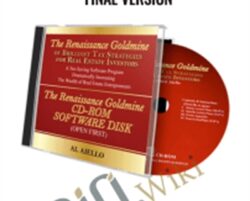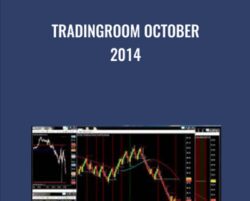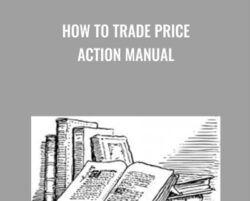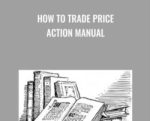The complete manual is available to logged-in purchasers of the Brooks Trading Course.Although I use mostly candle charts, I believe that context is more important than candle patterns, whether I am day trading or swing trading. This is true for the Emini, Forex markets, the stock market, and any other market.I make my trading decisions based on where the market is in the market cycle. I decide if it is in a trend or a trading range. If it is in a trend, I then decide if it is in a channel or in a breakout. I then structure and manage my trades by using appropriate protective stops and profit targets.Computers dominate the marketsThe book Flash Boys has received a lot of attention lately, but it has nothing to do with day trading. We operate in a time frame of seconds to minutes, so milliseconds are meaningless to our trading.However, financial institutions dominate trading and most trading is controlled by computer algorithms. This makes markets move closer and closer to perfection and it reduces the edge for everyone, but there will always be traders who are better than others, and they will consistently make money. Traders do not have to be great, but they do have to be consistently good.Traders should swing tradeEven though I scalp many trades every day, swing trading should be the foundation for every trader. A swing trade is simply any trade where the reward is at least twice as large as the risk. Since 90% of the bars on any chart leave traders confused, the probability most of the time for any trade, long or short, is between 40 and 60%.That is why traders should swing trade. Ninety per cent of the time, going for a reward that is at least twice as big as the risk results in a mathematically profitable strategy (a positive trader’s equation) for both the bull and bear side of the trade.Either high probability or good risk/reward, but never bothSome traders are comfortable trading any market, but others prefer specific types of market conditions. For example, I like high probability trades, which means that I especially like to trade during strong breakouts.Other traders prefer small risk; as a corollary, they must be taking trades with low probability. This means that they need to go for a big reward to offset that low probability.Many experienced traders believe that they are not good at picking exact tops and bottoms, but they are good at knowing approximately where they are. They then scale into trades, which increases their probability of making a profit from their trades.However, whenever a trader does something to increase his probability, he has to pay for it with either a smaller reward, an increased risk, or both (a less favorable risk:reward ratio).Importance of 1st 2 hoursMany traders make most of their money in the first couple of hours of the day and they look to swing trade opening reversals and trend breakouts. Although similar moves occur in the final hours, they are much more difficult to trade profitably since repeated reversals dominate the end of most days. It is okay to not trade the final hour.Enter with stop ordersEntering with stop orders is the best choice for most traders because the market is going your way, at least for one tick. During strong breakouts, entering at the market or with limit orders on the close of bars is also trading in the direction of market momentum, but is more difficult emotionally for traders starting out.Experienced traders will use limit orders to fade breakouts at the tops and bottoms of trading ranges, and will often scale in and scalp. It takes years of trading to do that well, and traders should focus on other entries until they are consistently profitable.Trade Management is criticalTrade management is more important than picking buy and sell signals.When the market is in a strong breakout during the other 10% of the time, the probability can be 70% or more during those brief times. The probability of a profitable long or short trade is around 50% during 90% of the day. During most of the day, there is a way to structure a profitable long trade and a profitable short trade. Traders simply chose whether they want to buy or sell and then figure out how to manage the trade profitable.For example, when the market is in a trading range, traders will buy low, sell high, and scalp. Bulls will scale into longs in the lower half of the range and scalp out with profits in the top half. Bears will do the opposite. They will scale into shorts in the top half and take profits in the lower half.Trading with optionsWhen I hold positions overnight, I usually do so using put and call options. Traders do not need to understand iron condors, broken wing put flies, or the Greeks to make money from trading options. I use simple puts, calls, and spreads, and I trade them just as I do stocks and futures. If I think the market is going up, I buy a call or a call spread. If I think it is going down, I buy a put or a put spread.Are other option strategies better? Sometimes, but as long as what I do makes sense, I never worry about something else that might be better. Traders should avoid “analysis paralysis” where they spend so much time deciding on how to get the last penny out of the market that they end up being too confused to place any trade and then don’t get any pennies!PsychologyAlthough I do not believe that a psychologist can help make a trader profitable, trading psychology is important. Traders must constantly work to prevent their emotions from influencing their decisions. One good way is to trade the “I don’t care” size. Trade small enough so that you will not worry about losing. This allows traders to do what is right more often.The most important aspect of trading psychology is that traders should always strive to stay in their comfort zone. They need to be happy. If a trader finds himself feeling too anxious, he needs to find out why. Is he trading too big of a position and is constantly worried about losing too much money? Is he buying in a bear trend, hoping that the current reversal attempt will be the one that finally works?Trade in the direction of the trendIt is much less stressful to trade in the direction that the market is going, which is the Always In direction. It is also less stressful to take fewer trades and swing trade. Every trader has the goal of making money for themselves and their families, but it is important to not lose sight of the bigger goal of living a happy life. Learning how to trade can help traders achieve both goals!How to Trade Price Action ContentsPrice action and candlestick charts [open to all]The market and the market cycleMath every trader must know (trader’s equation)The importance of institutions [open to all]Price action is genetically based [open to all]Bar countingExtreme scalping = manual high frequency tradingThe folly of trading with fundamentalsThe surefire folly of technical analysis indicators [open to all]Trading breakoutsTrend channelsSupport and resistanceTrading ranges [open to all]Trend reversalsTrading the openAlways in long or shortBeginners should enter using stop ordersIs there a perfect setup when trading online? [open to all]My setup for 5 minute charts and daily charts [open to all]What size account do I need to trade? [open to all]What should my trading position size be? [open to all]Learn to manage your tradesScaling into tradesTrading options (puts and calls)Trading psychology and the importance of happinessEach chapter is a post in my blog and these articles provide the foundation for trading using price action and are a good overview of the material in the Brooks Trading Course. The course goes into far more depth and has many more examples. However, these articles give you an idea of how I view and trade the markets.Get How to Trade Price Action Manual – Al Brooks, Only Price $57Tag: How to Trade Price Action Manual – Al Brooks Review. How to Trade Price Action Manual – Al Brooks download. How to Trade Price Action Manual – Al Brooks discount.
 The Renaissance Goldmine Final Version – Al Aiello
₹14,110.00
The Renaissance Goldmine Final Version – Al Aiello
₹14,110.00
 Tradingroom October 2014 – Al Brooks
₹2,988.00
Tradingroom October 2014 – Al Brooks
₹2,988.00
How to Trade Price Action Manual – Al Brooks
₹8,798.00




